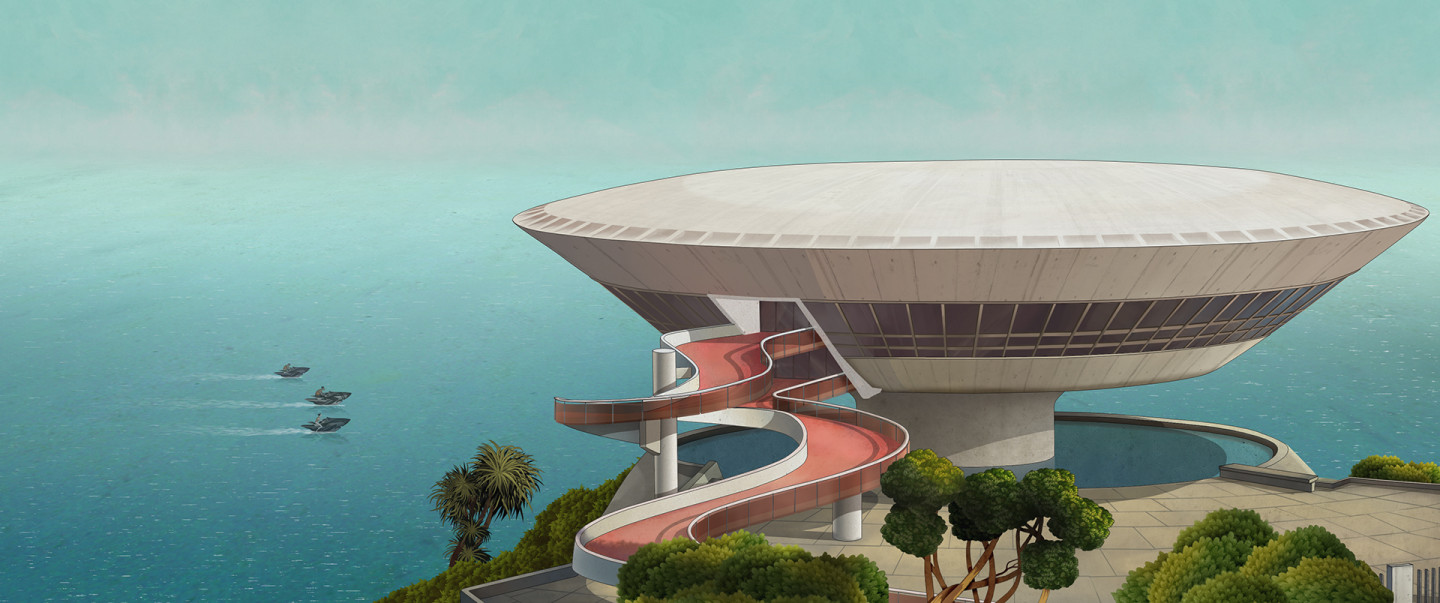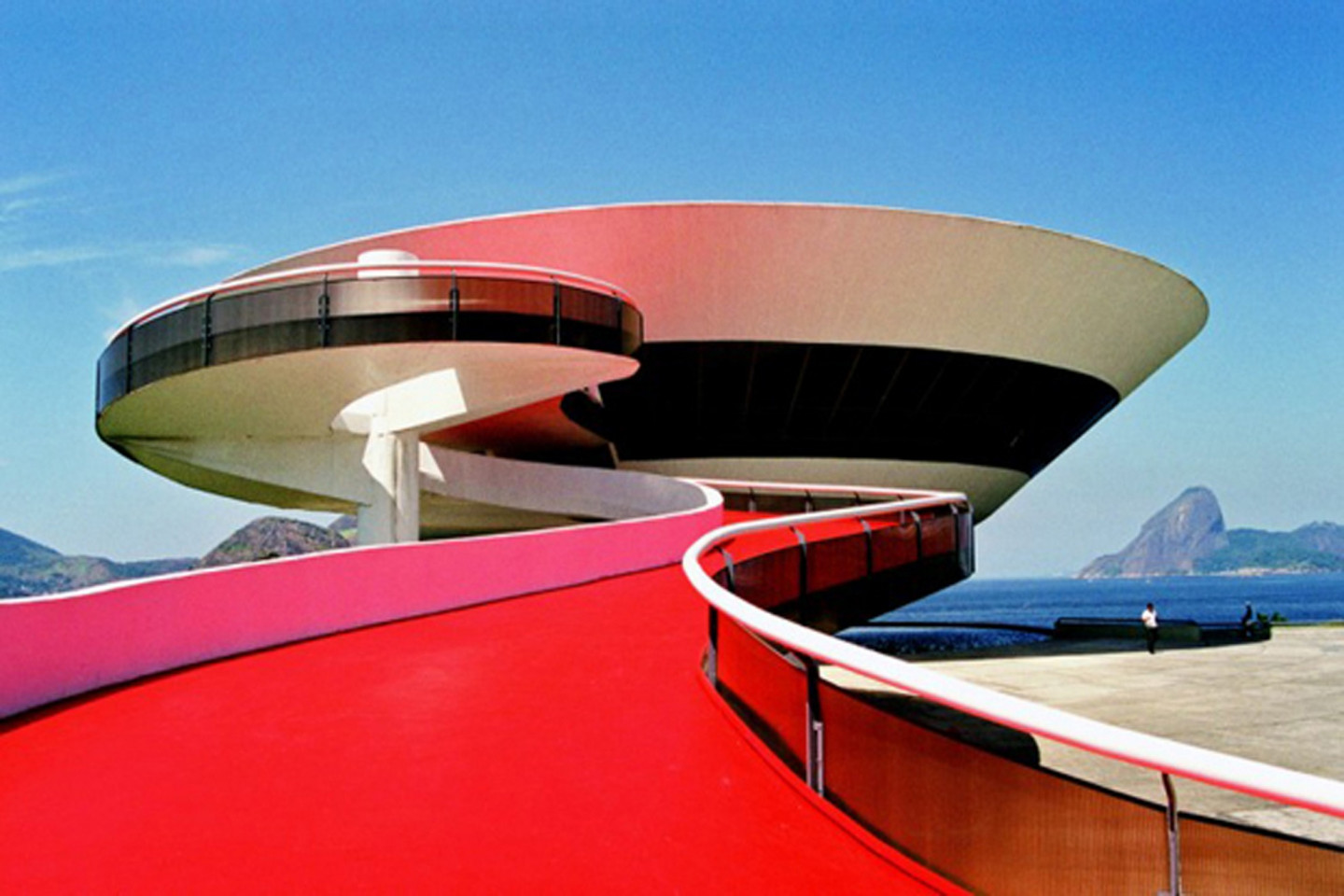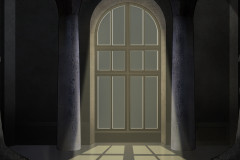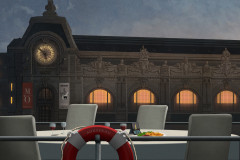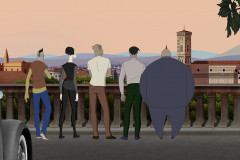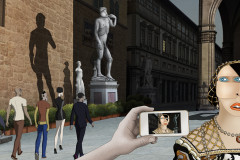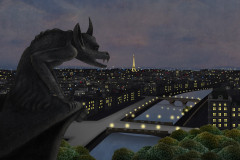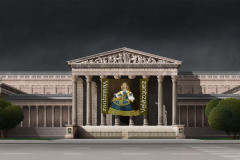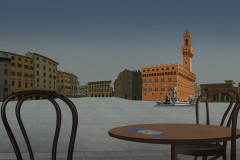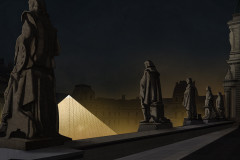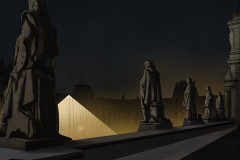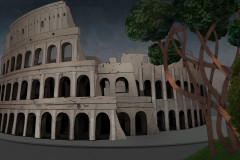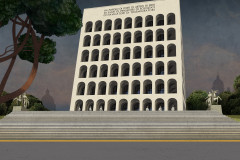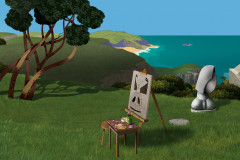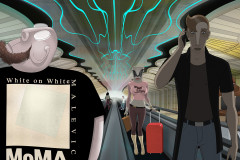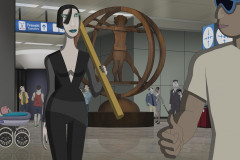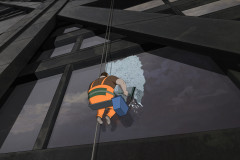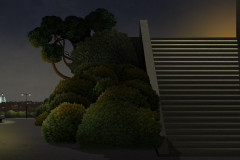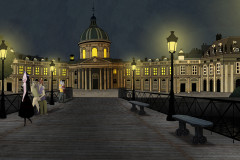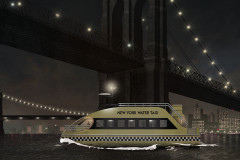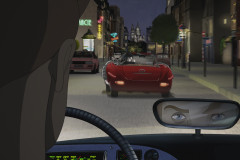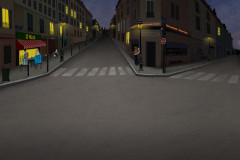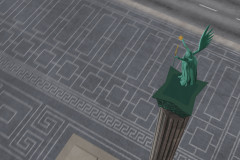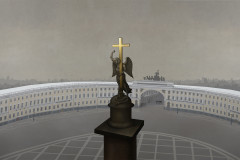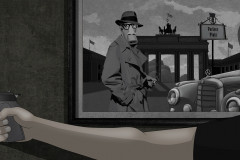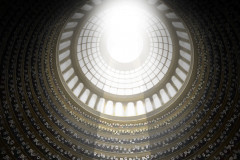Ez az UFO a riói látkép meghatározó része. A brazil építész, Oscar Niemeyer 1996-ban tervezte a modern művészetek múzeumát. Bámulatosan szép helyen, a Cukorsüvegheggyel szemben, egy tengernek feszülő sziklán áll a MAC. A brazil politika szövevényeit jól példázza, hogy az értékes terület megszerzését földvásárlási botrány övezte. Az épület központi eleme a 16 méter magas, 50 méter átmérőjű kupola, ami 3 szinten mutatja be a kortárs brazil művészeteket. A hatszögletű központi csarnok 400 nm-es kiállítóterében tartóoszlopok, azaz zavaró elemek nélkül csodálhatjuk meg a kortárs alkotásokat. A hexagont egy körfolyosó övezi, amelynek 40 fokban dőlő ablakainak köszönhetően lebilincselő panorámában gyönyörködhetünk. A főépület alatt kerek medence övezi a múzeumot, Niemeyer épp ezért egy sziklán nyíló virághoz hasonlította művét. A természet közelsége ihlette a mestert a tervezésben, így a múzeum formaalakítása „magától értetődő”. A bejárathoz látványos, piros rámpa kígyózik fel, ami szintén organikus motívumnak hat.
A csapat nagyon stílusosan, jet sky-n érkezik Rióba. Felkígyóznak a vörös rámpán, hogy aztán ellopják a múzeumból a művészettörténet egyik legnagyobb géniuszának, Pablo Picasso-nak a Nő könyvvel című festményét. Itt két érdekességet is megfigyelhetünk: Picasso képe az egyetlen az elrabolt 13 mű közül, amelyet a készítők változtatás, átrajzolás nélkül emeltek be a filmbe. Másrészt a Picasso-alkotás valójában a kaliforniai Pasadena-ban található. Persze sokkal látványosabb, hogy a tenger által övezett sziklaperemen állói Niterói Múzeumból lopják el a képet.
This UFO-like structure is a defining feature of the Rio skyline. Designed in 1996 by Brazilian architect Oscar Niemeyer, the Museum of Contemporary Art (MAC) sits in a breathtaking location—perched on a seaside cliff directly facing Sugarloaf Mountain. The tangled realities of Brazilian politics are reflected in the land acquisition scandal that surrounded the museum's construction. The building’s central element is a 16-meter-tall dome with a 50-meter diameter, spread over three levels dedicated to contemporary Brazilian art. The hexagonal central hall, with its 400-square-meter exhibition space, is free of supporting columns—allowing for an uninterrupted experience of the artworks. Encircling the hexagon is a ramped gallery with 40-degree slanted windows, offering a stunning panoramic view. Below the main structure, a circular reflecting pool surrounds the museum, prompting Niemeyer to compare his creation to a flower opening on a rock. Inspired by the closeness of nature, the building’s form feels almost “inevitable.” A dramatic red ramp snakes up to the entrance, another organic element in the overall design.
The team arrives in Rio in true style—on jet skis. They ascend the iconic red ramp to steal Woman with Book by Pablo Picasso, one of art history’s greatest geniuses. Two notable details emerge here: Picasso’s work is the only one of the 13 stolen pieces in the film that appears without any alteration or reinterpretation. And in reality, the painting is housed in Pasadena, California. But let’s face it—it’s much more cinematic to steal it from the cliffside Niterói Museum, surrounded by sea.






